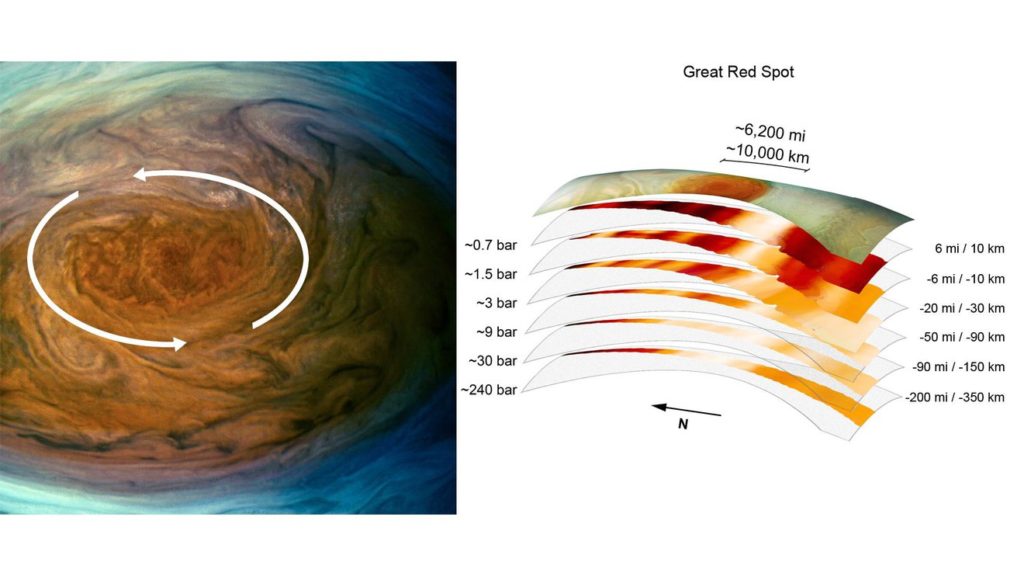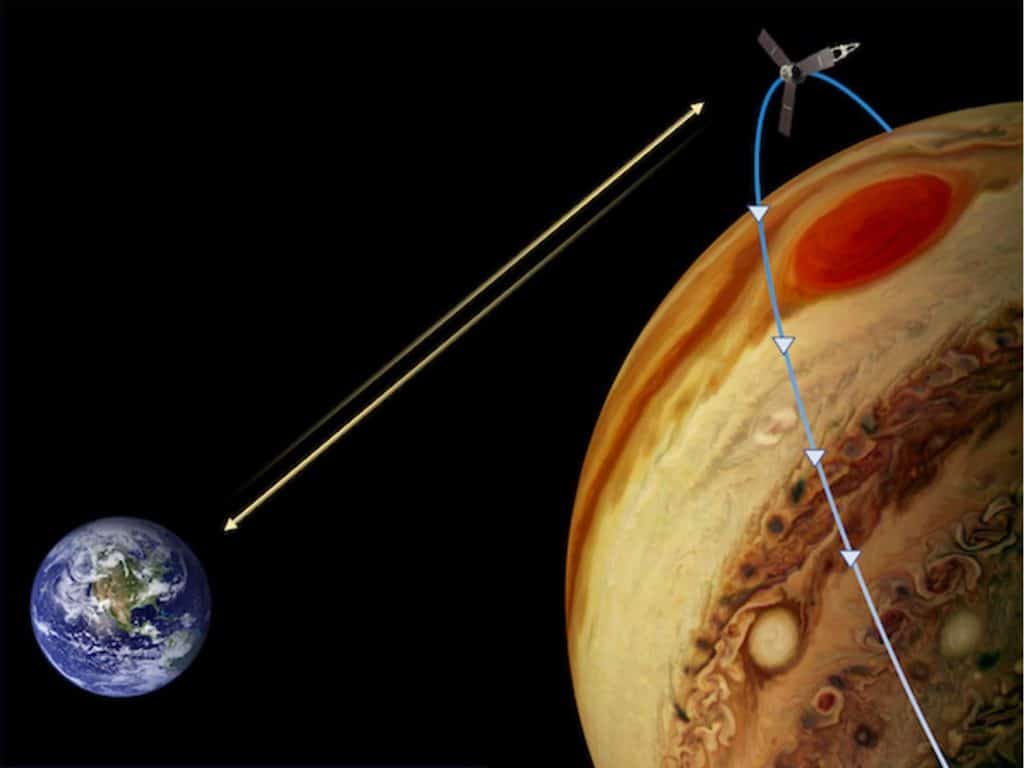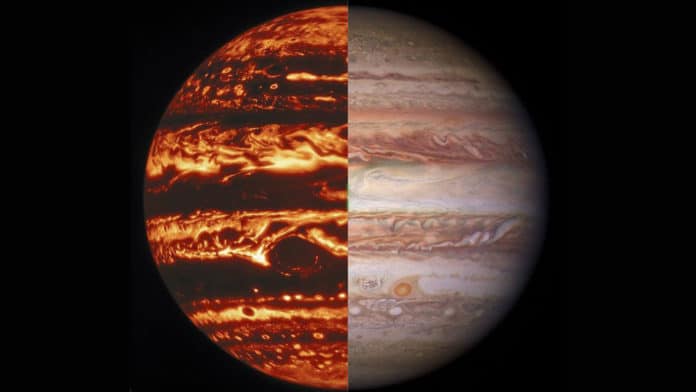Jupiter’s clouds are formed at different altitudes in the planet’s atmosphere. The observational data from NASA’s Juno spacecraft recently reveals unseen processes below Jupiter’s clouds.
The spacecraft offers a complete view of the planet’s distinctive and colorful atmospheric features. This study sheds light on the inner workings of the belts and zones of clouds encircling Jupiter, as well as its polar cyclones and even the Great Red Spot.
Previous data from Juno suggests that phenomena in Jupiter’s atmosphere went deeper than expected. In this study, all those individual data pieces have been put together, giving a first real understanding of how Jupiter’s beautiful and violent atmosphere works – in 3D.
Lori Glaze, director of NASA’s planetary science division at the agency’s headquarters in Washington, said, “These new observations from Juno open up a treasure chest of new information about Jupiter’s enigmatic observable features. Each paper sheds light on different aspects of the planet’s atmospheric processes – a wonderful example of how our internationally-diverse science teams strengthen understanding of our solar system.”
Juno’s Microwave Radiometer instrument probe beneath Jupiter’s cloud tops provides data on the atmosphere’s structure, movement, and chemical composition to a depth as great as 1,000 atmospheres — about 342 miles (550 kilometers) below the visible cloud tops. Great Red spot, aka iconic anticyclone, is the most famous storm.

The findings also indicate these storms are far taller than expected, with some extending 60 miles (100 kilometers) below the cloud tops and others, including the Great Red Spot, extending over 200 miles (350 kilometers). This surprising discovery demonstrates that the vortices cover regions beyond those where water condenses and clouds form, below the depth where sunlight warms the atmosphere.
The height and size of the Great Red Spot mean the concentration of atmospheric mass within the storm potentially could be detectable by instruments studying Jupiter’s gravity field.
The team also measured velocity changes as small 0.01 millimeters per second using a NASA Deep Space Network tracking antenna from a distance of more than 400 million miles (650 million kilometers). This enabled the team to constrain the depth of the Great Red Spot to about 300 miles (500 kilometers) below the cloud tops.
Marzia Parisi, a Juno scientist from NASA’s Jet Propulsion Laboratory in Southern California and lead author of a paper in the journal Science on gravity overflights of the Great Red Spot, said, “The precision required to get the Great Red Spot’s gravity during the July 2019 flyby is staggering. Being able to complement MWR’s finding on the depth gives us great confidence that future gravity experiments at Jupiter will yield equally intriguing results.”
Jupiter also has distinctive belts and zones that wrap around the planet. Strong east-west winds moving in opposite directions separate the bands. These winds, or jet streams, reach depths of about 2,000 miles (roughly 3,200 kilometers). However, how these jets form remains elusive.

Data collected by Juno’s MWR suggests that the atmosphere’s ammonia gas travels up and down in great alignment with the observed jet streams.
Keren Duer, a graduate student from the Weizmann Institute of Science in Israel, said, “By following the ammonia, we found circulation cells in both the north and south hemispheres that are similar in nature to ‘Ferrel cells,’ which control much of our climate here on Earth. While Earth has one Ferrel cell per hemisphere, Jupiter has eight – each at least 30 times larger.”
It is also found that these belts and zones undergo a transition around 40 miles (65 kilometers) beneath Jupiter’s water clouds. These belts get brighter in microwave light at shallow depths. On the other hand, they are dim below the water clouds.
Leigh Fletcher, a Juno participating scientist from the University of Leicester in the United Kingdom, said, “We are calling this level the ‘Jovicline’ in analogy to a transitional layer seen in Earth’s oceans, known as the thermocline – where seawater transitions sharply from being relative warm to relative cold.”
Alessandro Mura, a Juno co-investigator at the National Institute for Astrophysics in Rome, said, “Jupiter’s cyclones affect each other’s motion, causing them to oscillate about an equilibrium position. The behavior of these slow oscillations suggests that they have deep roots.”
